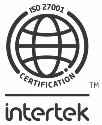Highlights from Insurtech Insights 2024

Fresh from another successful year at Insurtech Insights, Europe’s largest Insurtech conference, we thought we’d reflect on the highlights from last week (20-21 March 2024).
As a proud Gold Sponsor of the two-day conference that welcomed more than 6,000 delegates from across Europe, Insurtech Insights did not disappoint. The appetite for innovation from every corner of the InterContinental London Hotel was palpable.
Showcasing our capability
Many companies attend Insurtech Insights with the latest tech innovations, seeking investment, partnerships, customer growth, and recognition. INSTANDA came to the event with clear objectives: to showcase our platform's capabilities, connect with partners and potential clients, and assert our commitment to transforming the insurance industry.

The Exhibition
Once again, we took prime position at event booth B14. Catching the attention of growth-minded insurers, our interactive sessions underlined the advantages of agility in a digitised insurance landscape. Demos of our platform in action showcased the ease and speed with which insurance products can be built and modified, all without writing a single line of code.
Once again, and back by popular demand, was our very own vineyard in collaboration with Gusbourne Vineyard Experience. Both days, we treated visitors to an unmissable wine and cheese tasting session.

Sharing industry insights
A key highlight was when our CEO and Co-Founder, Tim Hardcastle, took to the stage to share his views on ‘How to future-proof your business and digitise your capabilities.’
Attracting an audience of 200+ people, Tim joined PwC Partner, Glynn Austen-Brown for a fireside chat with the following panellists: Adam Lantner, Allianz Commercial’s Strategic Transformation Executive; Noon Ali, Lockton’s Head of Digital (UK & Europe); and Yan Bry, AXA Next’s Chief Strategy & Operations Officer.
Launching discussions with the statement “It’s no longer about being the biggest but the fastest fish in the ocean,” PwC’s Glynn Austen-Brown, asked the panellists to share their insights on what insurers must do to keep pace.
Setting the right foundations
Starting the conversation, Lockton’s Noon Ali stated, “Insurers must do their foundational figuring out”. “Firstly,” she stressed “you must understand where the efficiencies are and what you want to do with data.” “Secondly and thirdly”, Noon added, “you must determine what the opportunities are and work out how to leverage different types of technology to disrupt that.” Noon made the excellent point that because change is happening so rapidly, “Insurers must digitise if they want to have a space in the industry.” However, she stressed that ‘having technology’ and ‘being digital’ are not the same thing. “Technology,” Noon shared, “is the easy part. Digitising a business involves marrying technology with the business to find the best solution for an organisation.”
Continuing Noon’s observations, AXA Next’s Yan Bry, shared that “Today, business transformation is enabled and empowered by technology, and so the first thing that an insurer must have, is a clear business strategy.” Speaking openly about the Centre of Excellence that AXA Next has built, and the importance of having cross functional implementation teams focused on solving business problems, Yan spoke about the enormous value in “business being in the driving seat in digital transformation at scale, across the whole Group.”
A matter of culture
Following on from Yan’s observations, Allianz Commercial’s Adam Latner gave a fascinating insight into global insurer’s approach to digital transformation. For context, Adam reminded the audience that Allianz employs approximately 160,000 people across 70 countries. Aligning with some of AXA’s challenges, Adam spoke about the importance of people. As he so aptly described, “Culture eats strategy for breakfast.” Referencing how everything starts and finishes with people, he shared his insights on how important it is to create digital literacy across the entire organisation, which is quite a challenge on a global scale but one that Allianz is absolutely meeting. Going into further depth, Adam also talked about the importance of challenging the selection of new business models, and the transformative value in exploring process mining.
Continuing the thread of discussions, Tim was asked by PwC’s Glynn Austen-Brown, what do insurers (of all sizes) need to get right to enable the type of change that the other panellists spoke about?
Getting the technology costs right
Tim responded by talking about cost being one of the key components of digital agility. “Technology,” he mentioned, “should cost the industry less than 1% of GWP.” However, one of the biggest challenges the industry faces is that the technology that they currently have was born in a different era (costing a lot more than 1%). Against this backdrop, Tim asked a rhetorical question, “How do we equip ourselves for a future which has a lot of different variables?” The answer, he shared, “Is agility, and an insurer’s unit economics must be aligned with that so that resources and technology can be deployed in a very cost-efficient way.” Echoing the sentiment of the other panellists, Tim explained, “This involves looking at the business through the customer lens; meeting the customer where they are with products and experiences that they want.”
“The insurance industry,” Tim added, “has done a pretty good job over the last 300+ years, but other industries are doing a far better job at meeting customer needs.” Tim mentioned that operating models are holding many insurers back. Beholden to legacy technology, they do not have the middle and back-office functions to change pricing, and “This,” he explained, “is a huge barrier in meeting the needs of tomorrow’s customers.”
A layered approach to core transformation
Following Tim’s outlook, AXA’s Yan Bry, added, “For transformation to be successful, you need to work on several layers.” He explained how taking a layered approach to rearchitecting core systems with cloud-based solutions enables an insurance company to “build something that can be progressively replaced and is much more modular.” Once the right foundation is in place, Yan, continued, “The data and analytical layers can be added,” which are fundamental in being able to serve customers across multiple geographies.
Building on Yan and Tim’s observations, Noon shared, “The industry has got a massive fear of missing out.” She added, “We want to do everything before our competitors,” but she warned, “You must take care of your foundational core business first and migrate to 21st Century ways of working before starting to apply Generative AI.”
Preparing for the future
Returning to Noon and Tim’s points on getting the basics right to meet evolving customer needs, Allianz Commercial’s Adam Lanter, added, “New technologies [including AI] are allowing us to change the interaction model with the customer; bringing us [insurers] closer to their needs or creating new needs that we can satisfy.”
Tim followed Adam’s more detailed insights on AI with an observation on the speed of change. Although he admitted that AI is “In a hype cycle,” he added, “there’s something different about AI. Although we will always see change waves, the velocity of change with AI is unlike anything that we have seen before.”
Reflecting on his earlier point in the session, Tim explained, “To prepare for change, insurers need to be far more agile as we don’t quite know when this change is going to hit and how hard. We just know that it’s going to get faster and harder to cope with if an organisation is unprepared.”
A familiar conversation
The on-stage conversations mirrored the discussions we were also having with prospective clients on our stand.
Many insurers are grappling with complex legacy systems just at a time when they need to be far more agile. INSTANDA, of course, is helping insurers across the world overcome this challenge with its cloud native, no-code core digital policy administration platform that seamlessly integrates with existing technology environments and third-party data analytics and AI solutions.
To see INSTANDA in action and explore the full potential of its capability, you’re very welcome to book a platform demo.





